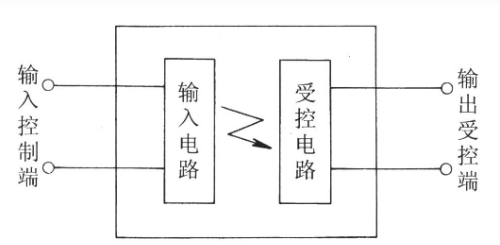Solid State Relay (SSR for short) is a non-contact switch composed of microelectronic circuits, discrete electronic devices, and power electronic power devices. The isolation device is used to realize the isolation between the control terminal and the load terminal. The input end of the solid state relay uses a tiny control signal to directly drive a large current load.
1. What is a solid state relay
Solid-state relay is a new type of non-contact switching device composed of solid-state electronic components. It uses the switching characteristics of electronic components (such as switching triodes, triacs and other semiconductor devices) to achieve non-contact and spark-free connection. And the purpose of disconnecting the circuit, so it is also called "non-contact switch". A solid state relay is a four-terminal active device, two terminals are input control terminals, and the other two terminals are output controlled terminals. It has both amplifying and driving functions and isolation functions. It is very suitable for driving high-power switching actuators. Compared with electromagnetic relays, it has higher reliability, no contact, long life, fast speed, and little interference to the outside world. been widely used.
Second, the structure and principle of solid state relay
Commonly used solid state relays are almost all modular four-terminal active devices, of which two ends are input control ends, and the other two ends are output controlled ends. The basic composition is shown in the following figure. Photocouplers are often used in the device to achieve electrical isolation between input and output. The output controlled end utilizes the switching characteristics of semiconductor devices such as switching transistors and triacs to achieve the purpose of connecting and disconnecting an external control circuit without contact and spark. The whole device has no moving parts and contacts, and can achieve the same function as a common electromagnetic relay.

According to the different polarities of the output terminals, solid state relays can be divided into two categories: DC type and AC type. The DC solid state relay (DC-SSR) control voltage is input from the input terminal IN, and the control signal is coupled to the receiving circuit through the photocoupler, and the switching transistor VT is turned on after being amplified. Obviously, when the output terminal OUT of the DC solid state relay is connected to the controlled circuit loop, there are positive and negative poles. The circuit principle of the AC solid state relay (AC-SSR) is different from that of the DC solid state relay. Its switching element adopts a triac VS or other AC switches, so its output OUT has no positive and negative poles, which can control the AC circuit. on and off.
Since mature and reliable photoelectric isolation and other technologies are used between the input end and output end of the solid state relay, this makes the controlled weak current and the controlled strong current completely electrically isolated, so the signals output from various weak current devices can be directly added. On the input control end of the solid state relay, there is no need for additional protection circuits, etc.
Third, the characteristics of solid state relays
Solid-state relays are non-contact electronic switches with isolation function. There are no mechanical contact parts during the switching process. Therefore, in addition to the same functions as electromagnetic relays, solid-state relays are also compatible with logic circuits, resistant to vibration and mechanical shock, and have unlimited installation positions. , has good moisture-proof, mildew-proof and anti-corrosion performance, excellent performance in explosion-proof and ozone pollution prevention, low input power, high sensitivity, low control power, good electromagnetic compatibility, low noise and high operating frequency Features:
(1) There are no mechanical parts inside the SSR, and the structure is fully sealed by perfusion. Therefore, the SSR has the advantages of vibration resistance, corrosion resistance, long life and high reliability, and its switching life is as high as 10.1 million times.
(2) Low noise: The AC-type SSR adopts the zero-crossing trigger technology, so the voltage rise rate dv/dt and current rise rate di/dt are effectively reduced on the line, so that the SSR has minimal interference to the mains when it works for a long time. .
(3) The switching time is short, about 10ms, which can be used in high frequency occasions.
(4) Photoelectric isolation is adopted between the input circuit and the output circuit, and the insulation voltage is above 2500V.
(5) The input power consumption is very low, and it is compatible with TTL and CMOS circuits.
(6) There is a protection circuit at the output end.
(7) Strong load capacity.

